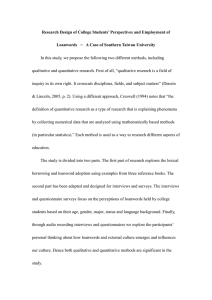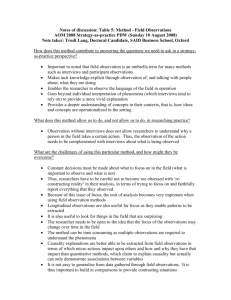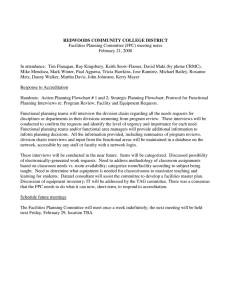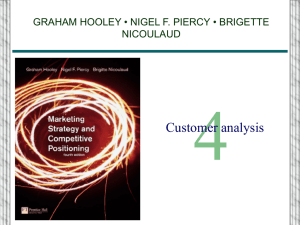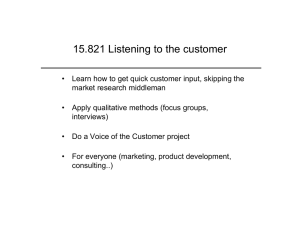Marketing Research Process i. Problem Awareness – make the
advertisement
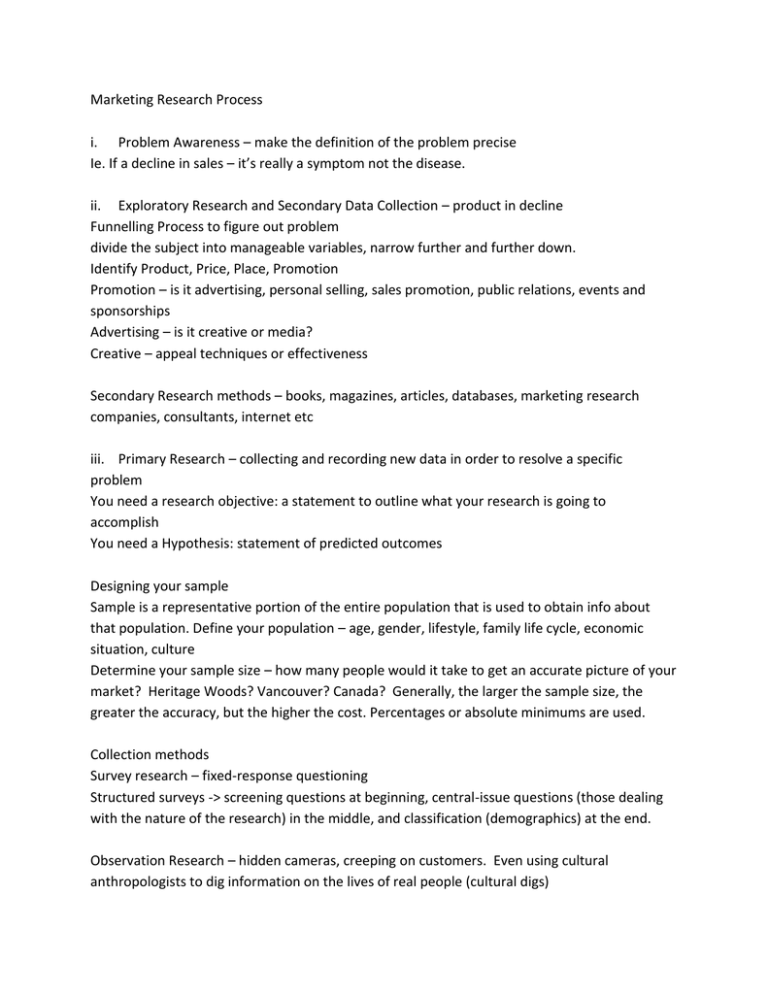
Marketing Research Process i. Problem Awareness – make the definition of the problem precise Ie. If a decline in sales – it’s really a symptom not the disease. ii. Exploratory Research and Secondary Data Collection – product in decline Funnelling Process to figure out problem divide the subject into manageable variables, narrow further and further down. Identify Product, Price, Place, Promotion Promotion – is it advertising, personal selling, sales promotion, public relations, events and sponsorships Advertising – is it creative or media? Creative – appeal techniques or effectiveness Secondary Research methods – books, magazines, articles, databases, marketing research companies, consultants, internet etc iii. Primary Research – collecting and recording new data in order to resolve a specific problem You need a research objective: a statement to outline what your research is going to accomplish You need a Hypothesis: statement of predicted outcomes Designing your sample Sample is a representative portion of the entire population that is used to obtain info about that population. Define your population – age, gender, lifestyle, family life cycle, economic situation, culture Determine your sample size – how many people would it take to get an accurate picture of your market? Heritage Woods? Vancouver? Canada? Generally, the larger the sample size, the greater the accuracy, but the higher the cost. Percentages or absolute minimums are used. Collection methods Survey research – fixed-response questioning Structured surveys -> screening questions at beginning, central-issue questions (those dealing with the nature of the research) in the middle, and classification (demographics) at the end. Observation Research – hidden cameras, creeping on customers. Even using cultural anthropologists to dig information on the lives of real people (cultural digs) Experimental Research – monkey video – one or more factors are manipulated under controlled conditions while other elements remain constant. Ie test marketing – dairy queen grill and chill – updated store decor, table service, premium burger patty, new style bun, and new grilled sandwiches. Canada is often used as a test market for other countries – diverse population, product’s performance can be assessed in urban vs suburban or east vs west markets. Qualitative Data – small samples, controlled environment, asking WHY eg focus groups. Average cost to companies for market research is $3500-$4500, topping out at $30000 for major packaged-goods companies. Collected from small sample group, Question format is unstructured, Questions deal with why people act, do purchase etc, small sample size poses reliability of data problems. Quantitative – what, when, who, how many, how often. 4 main ways to contact customers – personal interviews, telephone interviews, mail interviews, and internet. Collected data from a truly representative sample (200-300 people from target market), structured format questions, data are statistically reliable; degree of error can be calculated. iv. Data Transfer and Processing Check surveys for errors, transfer data to computer. Precoded answers for quantitative questionnaires. Results are tabulated – counting the various responses for each question. v. Data Analysis and Interpretation Data analysis - Evaluation of responses on a question by question basis, giving meaning to the data. Researcher makes observations and comparisons between groups Data Interpretation – relating the accumulated data to the problem, objectives, and hypothesis. Interpretation uncovers solutions to problems. vi. Recommendations and Implementations Once data has been interpreted, and various different solutions are suggested as alternative actions, one recommendation must be implemented.

